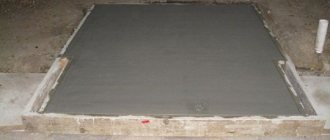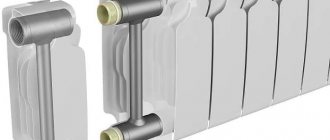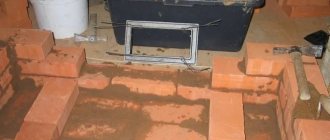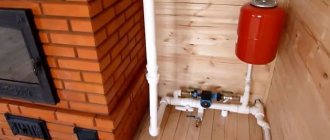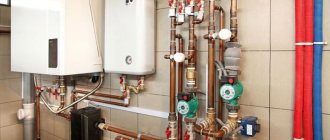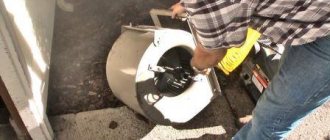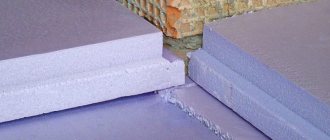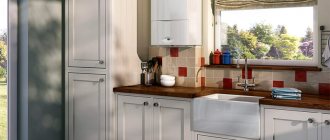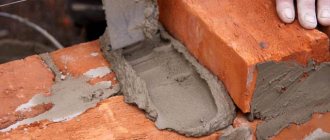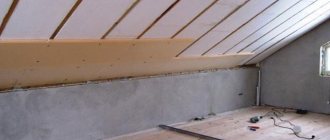In all-metal heating stoves, the chimney and shield are made of the same material; in combined stoves, metal is used only for the shield, and the exhaust paths are made of brick. Stationary models are completely brick.
If the dimensions of the room do not exceed 30 cubic meters. m, an all-metal stove is advisable, the most common example is a potbelly stove. Combined series cope with volumes up to 100 cubic meters. m; for larger premises, brick structures are appropriate.
Which stove will warm the room faster?
The density of the metal causes it to heat up faster than the brick; this indicator varies depending on the design of the furnace. Ceramic variations (made of refractory or red brick) are characterized by a porous structure, which also explains the slow temperature change, although the advantage is high efficiency due to long-term heat accumulation.
When choosing a design, it is also important to take into account the complexity of installation, the dimensions of the product, and the possibilities of mobile design.
What size house can be heated with a brick stove with a water circuit?
A brick stove can also be adapted for heating large areas if, when building it, a heat exchange element is placed near the firebox through which the coolant will pass, heating up and then circulating in the heating system distributed throughout the house. In this case, you may need to connect a water pump, which will accelerate the movement of coolant in the system.
Homemade efficient heat exchanger
Heat exchange elements can be of different shapes; the photo shows one of them. It is embedded in the structure of the stove near the combustion chamber so that, passing through it, the water quickly heats up and enters the pipes and radiators.
The inlet and outlet pipes from the heat exchanger are led outside the furnace structure, and the heating circuit is connected to them. Next, the system is filled with water, which will act as a coolant.
Wiring can be done using metal-plastic or polypropylene pipes
In this case, metal-plastic pipes are used for wiring and connection to the circuit.
Diagram of a wood stove with a water heating circuit
In this diagram, the heat exchanger is located above the firebox and is shown as a red grate. The blue line marks the cooled coolant, which passes through the circulation pump and enters the heat exchanger - this part of the circuit is called return. The red line marks the heated water entering the radiators.
A membrane tank is also installed in the heating circuit, which can be located in any accessible location in the circuit, but it is advisable to install it on the return pipe.
Diaphragm tank
It is also called a closed expansion tank. There is a nipple on its upper part, through which air is pumped into the upper chamber. When water in the system heats up, it expands and excess water rises into the tank, stretching the membrane. When cooling and the corresponding pressure drop, water is pressed back into the system. In this way, possible pressure surges in the pipes are smoothed out, and the risk of destruction of the integrity of the system from overheating is minimized.
Video sketch: an interesting version of a fireplace stove with a heating circuit
Why do iron stoves heat up faster?
Metal series are less demanding to operate, and since the material has high density and good heat transfer, using such models you can easily heat small rooms. But it is worth remembering that stoves cool down quickly; in order to maintain a comfortable microclimate, you need to constantly maintain combustion.
Combined models are more convenient, since a brick chimney retains heat longer; they are suitable for fairly spacious rooms. This solution has the following advantages:
- no restrictions regarding the choice of location;
- metal options do not require a foundation and have a high degree of mobility;
- compactness, universal availability;
- the ability to dismantle the heating panel during periods of inactivity;
- ease of obtaining permission to operate from regulatory authorities.
Weak sides:
- fire hazard and high risk of injury;
- short service life (up to 5 years, on average) due to the rapid burning of grates and walls.
Metal stoves do not help maintain a comfortable level of humidity; with them it is more difficult to achieve a healthy microclimate in the room.
Brick fireplace: pros and cons
A conversation about a brick fireplace should start with the fact that this is a design that will last forever. Literally: a hearth created by a skilled craftsman will work for centuries. Evidence of this is the estate museums where there are stoves built 100, or even 200 years ago. They still serve well to this day.
An almost eternal hearth... Sounds tempting, doesn't it? But there is a caveat. To build a reliable, durable and long-lasting fireplace, you need a highly qualified craftsman. The fact is that the masonry of the heating device and especially the chimney pipe must be perfectly level. Any deviations from the ideal geometry are fraught with turbulence of smoke, overheating and cracking of the brick.
By the way, some craftsmen suggest plastering the chimney duct so that soot does not settle on its walls. This is not the wisest decision. The temperature of combustion products is 500°C and above. Even the strongest plaster will not withstand such heat. Very soon it will burn out and crumble into the mouth of the fireplace.
But let's return to the main topic. A builder, even with extensive experience in masonry work, most likely will not be able to cope with a fireplace or stove. What is needed is a stove maker, and finding one is becoming more and more difficult every day. His services will be expensive, but, as the great schemer said, bargaining is not appropriate here. And the search for a cheap repairman often results in the customer becoming the owner of a skewed, smoking structure weighing 2-3 tons that cannot be repaired.
By the way, the weight of a masonry fireplace is another serious problem. It requires a reinforced concrete foundation that is not connected to the foundation of the building. And if the house has already been built, in order to fill it, you will have to open the floors. And then lead a wide brick pipe through the floors, cutting large holes in the ceilings. Not every homeowner will dare to undertake such a feat.
The construction of a masonry fireplace should be carried out simultaneously with the construction of a house. It is quite difficult to fit it into an existing building
So, building a home is not an easy task. But does this mean that “the game is not worth the candle”? Of course not. The main advantage of a masonry fireplace is its high heat capacity.
In simple words, it heats the house perfectly. Brick accumulates heat relatively quickly and releases it for a long time, so such stoves are ideal for year-round homes. One firebox lasts for several hours. And if you put a cast-iron combustion chamber in the mouth, the efficiency of the device will become even higher.
There is another compelling argument in favor of a brick fireplace. Made to order, it will fit perfectly into the size and style of the room.
You can equip it with a firewood rack, make a mini-stove, and organize niches for storing cereals and other bulk products. In short, there are a lot of options.
The decorative side of the issue also deserves mention. The fireplace can be painted with heat-resistant paint, plastered, lined with stone or tiles. However, many prefer to leave the brickwork intact - it is beautiful in itself.
Specifics of brick models
Such products are characterized by a larger heat-transmitting area; as a result of gradual heating, they produce energy longer. The mortar used for masonry contains clay; due to its absorbent ability, the moisture level in the room does not increase.
Brick ovens, like metal ones, are suitable for cooking; you can also bake in them; the stove in this case is larger. The only significant drawback is the stationary design, but the stove is optimal for country households. It heats up within 20-25 minutes after kindling.
This type of device requires preventive heating during the warm season: prolonged downtime can negatively affect the circulation of flows inside the unit. It is important to follow technological instructions to reduce the risk of carbon monoxide poisoning.
Choosing a heating system depending on the size of the house
- For small, well-insulated houses, consisting of one or two rooms and a kitchen, one heating and cooking stove made of brick will be sufficient.
- For larger buildings, it is necessary to carefully consider the heating system so that the entire house can be heated from one stove. For this purpose, heating is used using a water or steam circuit.
- For a one-story building, such a circuit can be connected to a brick stove or one made of cast iron. When installing a system in a two- or three-story house, a cast-iron stove-boiler is more suitable.
The next thing you need to decide is the type of fuel. The system can be heated with wood, coal, peat, gas, diesel, electricity or several of them. This choice will determine which heating stove to purchase.
Heated area
It must be recognized that both a brick stove and a metal stove are not the most effective means of heating houses with an area of more than 60 m² (with a ceiling height of up to 3 m). Practice shows that the stove can “cope” with such a volume of air only during off-season periods. It is difficult to achieve a comfortable temperature throughout the house when the outside temperature is -10 °C. Or it is necessary to install several stoves in different parts of the house.
Don't be fooled by the advertising promises of some metal stoves. Statements that the stove is capable of heating 100 m² or more imply a single room not divided into rooms by partitions. A metal stove - a potbelly stove or a fireplace stove - successfully heats only the room in which it is installed. Special convection heating stoves can heat several interconnected rooms, but the temperature between the room in which the stove is installed and the adjacent one will vary greatly.
- 1 of 1
On the picture:
Heating scheme for several rooms with one stove.
Brick stove: design and operation features
A brick fireplace is suitable for country properties and can be used at any time of the year. His
Brick fireplace
The design allows you to quickly warm up the room, especially with an open firebox. At the same time, the stove cools down quickly, almost immediately after the fire goes out.
Brick fireplaces open up many possibilities for the owner. Skilled hands can make a compartment for cooking or barbecue. It is not difficult to build a stove with your own hands and not necessarily within the premises. Brick fireplaces often decorate a plot of country house or country property.
You can choose which hearth is best for your home - made by yourself or made by professionals. Both options open up space for imagination, allowing you to build the structure of your dreams. If difficulties arise in this matter, contact the designer. It will help you choose an ordering scheme taking into account the general situation in the room.
Brick fireplace
[ads-mob-1][ads-pc-1]
The fundamental difference between steel wood-burning stoves
Steel stoves come in different varieties, but they all have one thing in common - they heat the room using convection.
Efimov Maxim Store manager on Vyborg highway. 212
Convection (translated from Latin convectiō - “transfer”) is a type of heating of a room when the lower layers of air heat up, become lighter and rise upward. And the air above, on the contrary, cools and sinks. This process is cyclical, which means it repeats again and again.
In other words, the stove takes in cold room air and returns warm air. This property is directly related to the material - steel has a low heat capacity, so it does not retain heat.
The heating option using convection is considered the fastest way to heat a room.
Fig 1. Convection method of heating a room
Steel wood-burning stoves are ideal if you are at your dacha/house for short periods of time, which means you need to quickly warm up the room. After just 20-30 minutes you will feel the cold receding and a pleasant warmth spreading throughout the house...
But steel stoves also have a downside - such stoves cool down as quickly as they heat up. For example, you warmed up the room, went to bed, and by morning you were numb from the cold! After all, you won’t leave a burning stove unattended overnight, and jumping up and checking it every hour is also not convenient. It turns out that in addition to a steel stove, you will also need an electric convector.
One more point needs to be taken into account - the hot steel surface of the furnace, interacting with the air in the room, simply burns oxygen. This, in turn, makes breathing difficult and will definitely not bring joyful feelings to household members. To neutralize this disadvantage, the house will need good supply and exhaust ventilation. In case of its absence, there is also a way out - just periodically open the window for ventilation.
Features of metal stoves
Metal fireplace
A cast iron fireplace is made almost entirely of cast iron. The material has high heat transfer, thanks to which the stove quickly and evenly distributes heat in the house. The design consists of a chimney, a body and a firebox with thick walls, which is closed by a transparent door with heat-resistant glass. Improved models are complemented by heat exchangers for the operation of water heating.
The cast iron stove is connected to a regular exhaust pipe. Models that are technically complex require more painstaking work: connecting to a pipeline, creating a brick cushion, and bringing out a pipe. Simple fireplaces are better in terms of connection, but improved options open up more opportunities, including getting hot water at any time of the year without connecting to a general water supply system and purchasing expensive heaters.
Heating duration
In terms of the time that the stove is able to release heat, models made of brick and stone are in the lead. A brick stove retains the accumulated heat for a long time (from 14 hours to a day), gradually releasing it into the rooms. On average, 500 W are released hourly from 1 m² of its surface area. Thus, even in severe frosts, the brick oven is fired up a maximum of a couple of times a day.
Finished stoves are mostly made of metal. This material heats up easily, but also cools just as quickly. The stove stops heating the room immediately after the last coals burn out. Manufacturers are struggling with this drawback: they either use internal inserts made of heat-intensive materials - so-called heat accumulators, or provide a special slow burning mode, when the wood barely smolders for several hours, keeping the stove body warm. But, nevertheless, metal stoves are not yet able to compare with a brick stove in terms of heating duration.
- 1 of 4
On the picture:
In modern metal fireplace stoves, in addition to the open and closed fire modes, a slow burning mode is often provided.
Imitation of a masonry oven.
When talking about masonry stoves, we mean stoves made entirely of stone or brick. What you see in the photo is a finished stove, lined with ceramic tiles. It does not require such complex construction as a masonry oven does.
In the photo: Ceramic oven 06 from the Gutbrod Keramik factory.
Speed of construction and cost
In these matters, the advantage remains on the side of furnaces made in production. They are relatively light weight and in rare cases require the construction of their own foundation. Factory-made stoves are supplied ready-made: you only need to carry out fire safety work at the installation site, connect and insulate the chimney.
Brick stoves, taking into account the cost of the material and the work of the stove maker, will cost more. The process of their construction is much more complex, lengthy, and dirty. And often you need to think about the construction of a brick oven at the time of building a house (after all, the structure is installed in the partitions). Whereas a metal stove can be brought and installed in a finished building.
